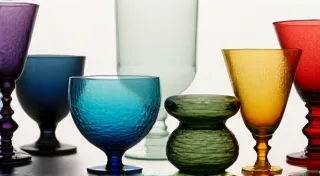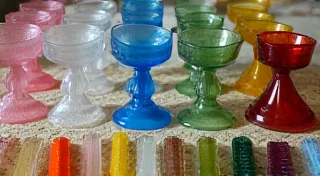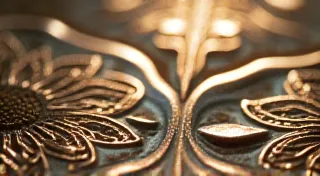Colored Glass: Exploring Ruby, Emerald, and Amethyst
Antique glassware isn't just about clear glass. The addition of color creates stunning variations, often increasing their collectible value and aesthetic appeal. While many colors exist in antique glassware, ruby, emerald, and amethyst are particularly beloved by collectors. Let's delve into these gorgeous hues and explore what makes them so special.
The Magic of Color: How Colored Glass is Made
Historically, color in glass wasn't achieved with dyes. Instead, metallic oxides were added to the molten glass during manufacturing. The type of oxide, its quantity, and the temperature of the furnace all influenced the final color. The process was a skillful blend of science and artistry. Understanding the nuances of glass manufacturing techniques is crucial for any serious collector – a skill further explored in How to Research and Authenticate Antique Glassware.
Ruby Glass: A Fiery Charm
Ruby glass, that deep, rich red, is one of the most recognizable colors in antique glassware. It’s typically created by adding gold compounds to the glass mixture. The quantity of gold dictates the intensity of the red; more gold typically results in a deeper, more vibrant hue. Ruby glass was popular during the Victorian era and can be found in a wide range of forms, from elegant goblets to charming little ornaments. Its warmth and beauty make it highly desirable among collectors.
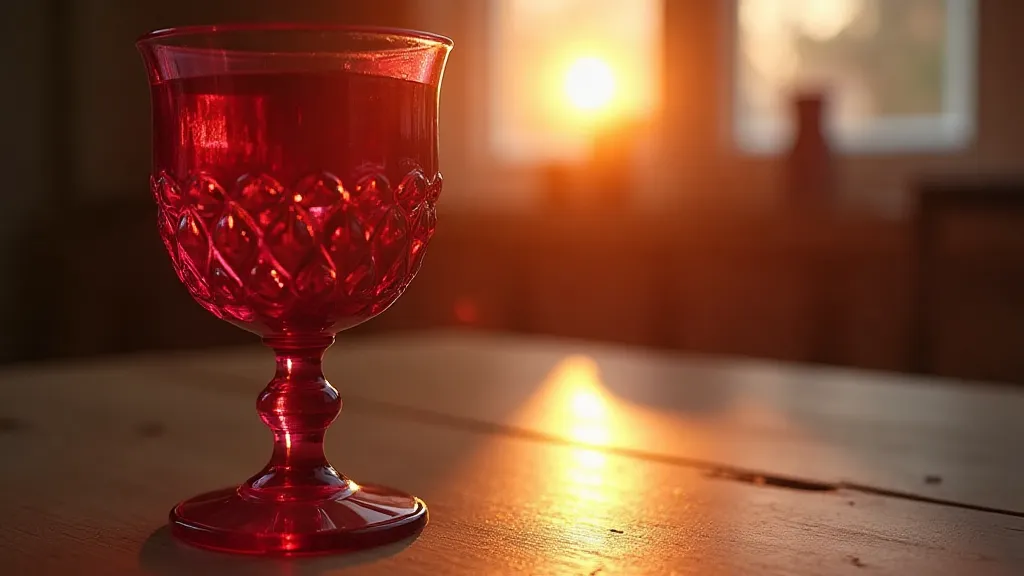
Identifying Ruby Glass: Look for the intense red color, often with a slight orange or brown undertone depending on the gold content. Be aware that some modern glass mimics the appearance of ruby glass, so careful inspection and knowledge of manufacturing techniques can help in identification. Many collectors focus on specific patterns and manufacturers; for example, enthusiasts of The History of Cambridge Glass will appreciate the varied styles and motifs.
Emerald Glass: A Lush Green Beauty
Emerald glass, a vibrant and verdant green, adds a touch of nature’s beauty to antique collections. This color is generally achieved through the addition of iron or copper compounds to the glass mixture. Emerald glass saw its peak popularity in the late 19th and early 20th centuries. It evokes a sense of lushness and elegance, making it a favorite for tableware and decorative pieces.
Identifying Emerald Glass: Emerald glass can range in tone from a lighter, almost yellowish-green to a deep, jewel-like shade. Look for consistent color throughout the glass and be aware of potential color variations based on the iron/copper content and firing conditions. The study of glass patterns is a vital component of collecting, and different manufacturers employed distinct methods. For those particularly interested in specific brands, understanding Heisey Glass: Patterns and Characteristics provides valuable insight into manufacturing and design.
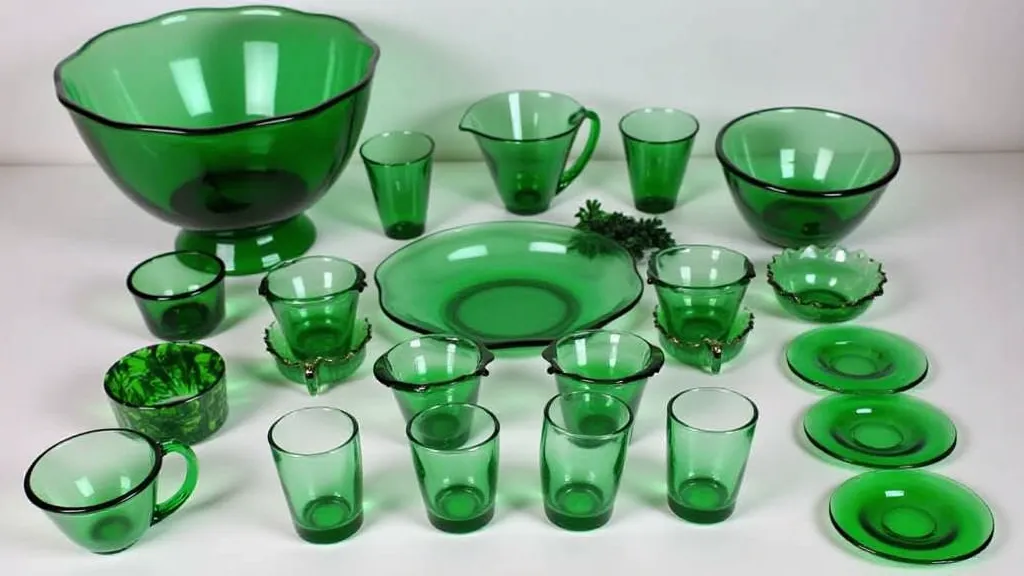
Amethyst Glass: A Royal Purple Delight
Amethyst glass, with its regal purple hue, instantly evokes a sense of luxury and sophistication. It’s typically created by adding manganese to the glass mixture. This can also react with iron, resulting in the purple color. Amethyst glass was especially popular in the Art Nouveau and Depression eras, gracing tables and adding elegance to home décor.
Identifying Amethyst Glass: Amethyst glass's purple tones can vary significantly, from light lavender to deep violet. A common characteristic, though not always present, is a slight brownish tint caused by the interaction of manganese and iron. Some amethyst glass exhibits a phenomenon known as "flash," where tiny bubbles create a shimmering effect when light passes through. The characteristics that define and distinguish various antique glassware brands are often subtle, but crucial to a collector’s knowledge.
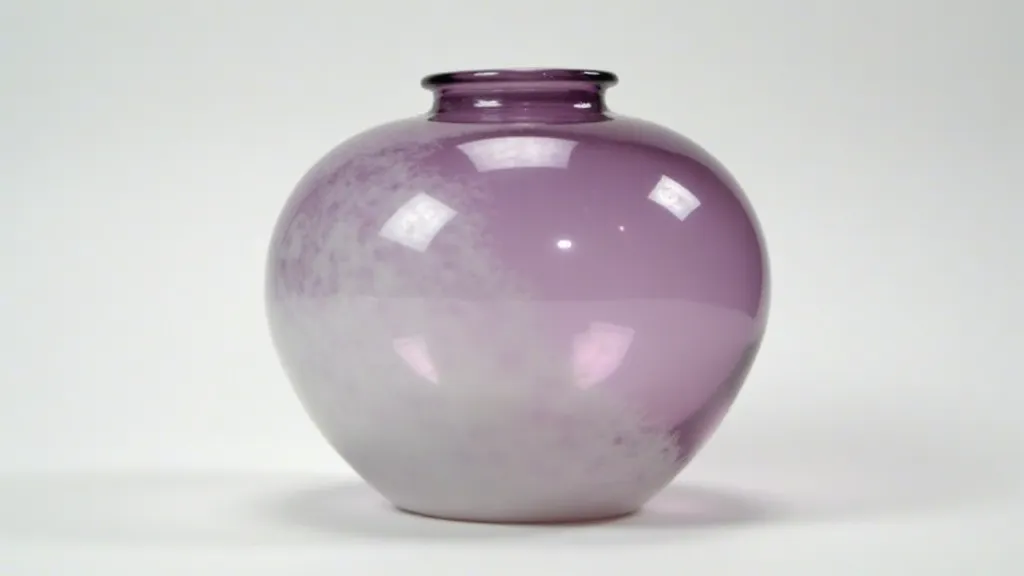
Beyond Ruby, Emerald, and Amethyst: A Spectrum of Colored Glass
While ruby, emerald, and amethyst capture much of the collector’s attention, the world of antique colored glass is far more extensive. Yellow glass, often created using uranium compounds, presents a fascinating history and visual appeal. Blue glass, sometimes achieved through the use of cobalt, evokes a sense of tranquility and elegance. Even darker shades, like the allure of The Collector's Guide to Black Glass, offer unique collecting opportunities. Understanding the chemistry behind these colors is a rewarding pursuit.
Collecting Colored Glass: Tips and Considerations
When collecting antique colored glass, consider the following:
- Pattern Identification: Just as with clear glass, colored glass often comes in distinct patterns. Learning these patterns is key to accurate identification and valuation. Detailed pattern books and online resources are invaluable tools.
- Condition: Chips, cracks, and repairs significantly impact the value of antique glass. Professional restoration can be costly and may affect the collectible value.
- Rarity: Certain colors and patterns are rarer than others, driving up their value. Limited production runs and design variations can contribute to a piece's rarity.
- Provenance: Knowing the history of a piece—where it came from and who previously owned it—can add to its collectibility. Auction records and family histories can provide valuable insights.
- Manufacturing Techniques: The precise methods employed by glassmakers significantly impacted the final product. Understanding the processes of hand-blowing, pressing, and molding allows for a deeper appreciation of the craftsmanship.
- Color Stability: Some colors, particularly those produced with uranium, can exhibit fluorescence under ultraviolet light. While this is a fascinating characteristic, it's important to be aware of potential health and safety concerns.
- Matching Sets: Complete sets of tableware are highly prized by collectors, and finding them can be a significant challenge. Even partial sets can be valuable.
Exploring colored antique glassware is a rewarding journey. With a little knowledge and a keen eye, you can appreciate the artistry and history embedded in these beautiful treasures. The complexities of glass manufacturing and the evolving trends in design create a rich tapestry for collectors to explore. Remember that identifying specific brands and understanding their production eras is a lifelong pursuit for many enthusiasts.

